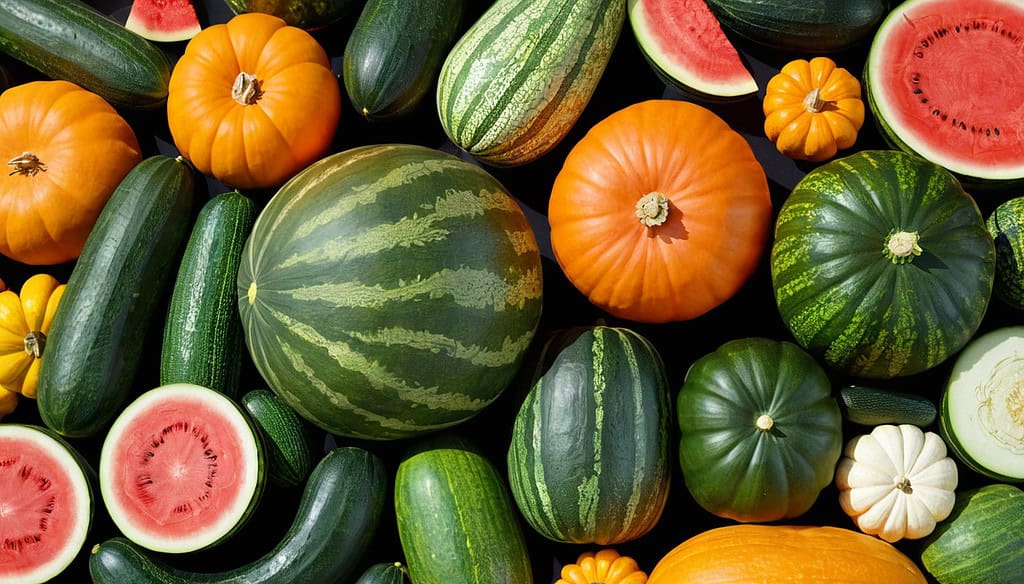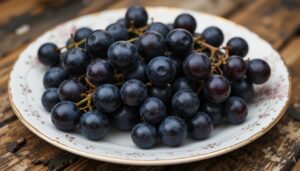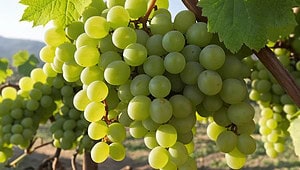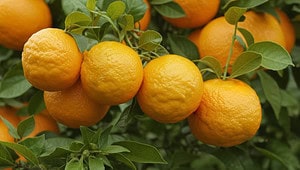Table of Contents
Cucurbitaceae Fruits: Must For A Nutritious Diet
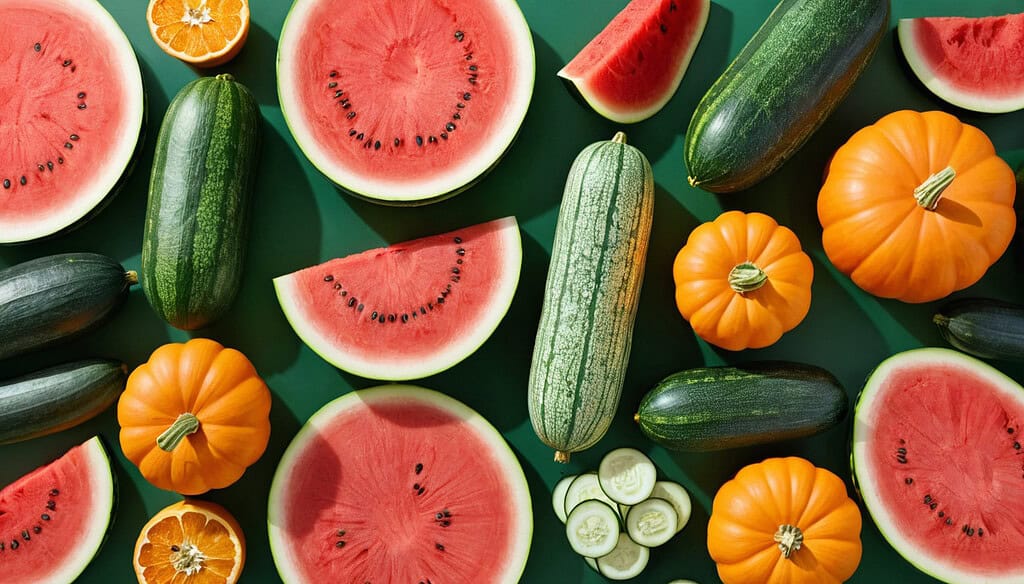
Cucurbitaceae fruits form one of the most significant and widely cherished fruit families globally, with varieties that have made an indelible mark on our diets. These fruits, which include watermelons, cantaloupes, cucumbers, and pumpkins, offer an impressive mix of flavors, textures, and nutritional benefits. Renowned for their high water content, Cucurbitaceae fruits are excellent for hydration while also delivering a wealth of essential nutrients, such as vitamins A and C, potassium, and dietary fiber.
Adding these fruits to our meals can dramatically enhance the nutritional quality of our diets, making them not only satisfying but also exceptionally nourishing. Furthermore, these fruits are versatile and fit effortlessly into various culinary applications, whether eaten fresh, blended into smoothies, or incorporated into savory dishes. Their contribution extends beyond just vitamins and minerals; they are also rich in antioxidants and beneficial plant compounds, which may support heart health and improve digestive function. Additionally, some Cucurbitaceae fruits, like pumpkins and gourds, have seeds packed with healthy fats and proteins, providing even more reasons to include them regularly.
The global popularity of these fruits underscores their importance, as they have become dietary staples in many cultures around the world, celebrated for their taste and health-promoting properties. Their low-calorie content also makes them an excellent choice for those seeking weight management solutions. While some fruits in this family have seasonal availability, the variety within the Cucurbitaceae family ensures a steady supply throughout the year. As we explore ways to eat more wholesomely, the incorporation of Cucurbitaceae fruits into our diet stands out as an accessible and effective means of boosting our overall wellness. With their widespread appeal and undeniable health benefits, these fruits deserve a prominent place in our kitchens and on our tables.
In this article, we are going to talk about 8 of the most important Cucurbitaceae fruits that are tasty and provide some incredible health benefits.
1. Watermelon
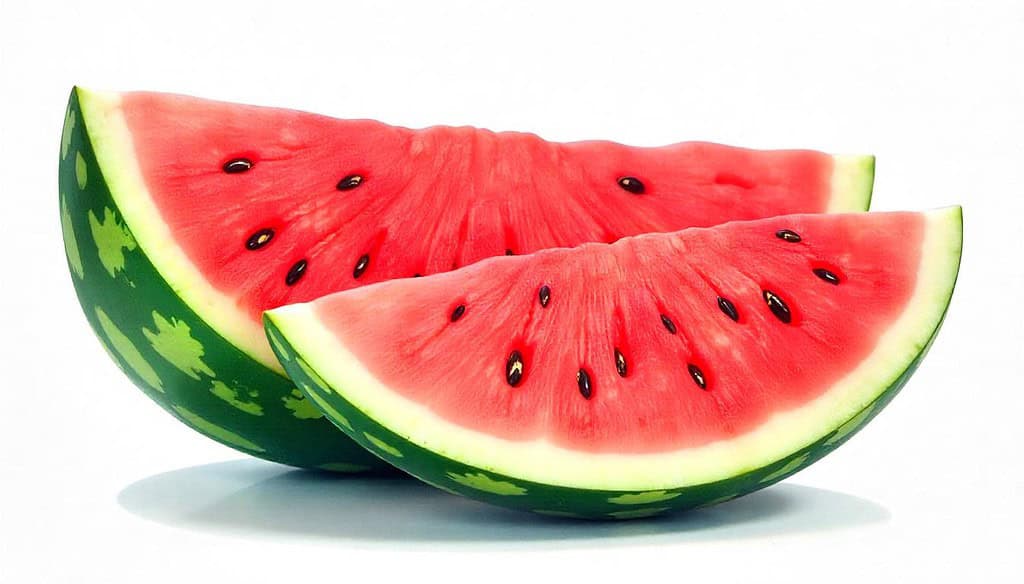
Watermelon, one of the most iconic Cucurbitaceae fruits, is synonymous with summer, thanks to its refreshing, hydrating quality. Known for its juicy, vibrant red flesh and striking green rind, this fruit is primarily composed of water, making it excellent for hydration. However, beyond its water content, watermelon provides a wealth of nutrients that make it a powerhouse addition to any diet. Rich in vitamins A and C, it contributes to healthy skin and a robust immune system.
Watermelon also contains lycopene, a potent antioxidant known for supporting heart health and offering some protection against oxidative stress. The presence of amino acids, such as citrulline, is beneficial for blood flow and muscle recovery, making this fruit a favorite among athletes. Additionally, watermelon’s potassium content helps in maintaining fluid balance and ensuring optimal muscle function. Due to its low-calorie density, watermelon is a satisfying snack for those looking to manage their weight while still enjoying something sweet.
Cucurbitaceae fruits like watermelon are not only delicious but also remarkably versatile, as they can be enjoyed fresh, blended into drinks, or even used in creative salads. Whether diced into fruit bowls or juiced for a refreshing beverage, this fruit never fails to deliver. The rind, often discarded, is also edible and can be pickled or added to stir-fries for an extra nutritional boost. Watermelon seeds, when roasted, provide a crunchy and nutrient-dense snack, rich in magnesium and healthy fats. Overall, watermelon is a shining example of how Cucurbitaceae fruits can elevate the nutritional value of our meals and keep us feeling refreshed.
2. Cucumber
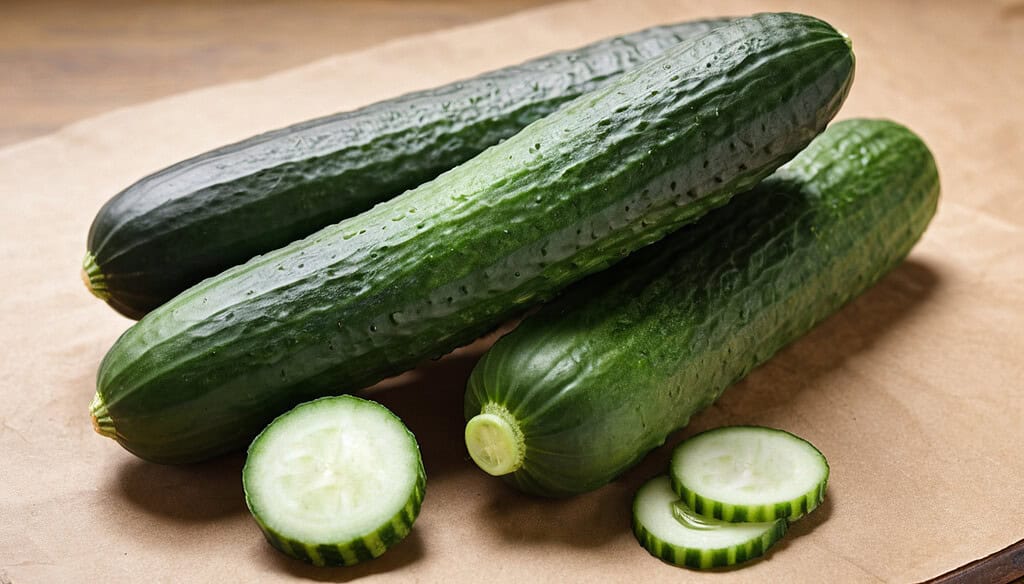
Cucumber is another popular member of the Cucurbitaceae fruits family, widely appreciated for its crisp texture and subtle flavor. It is an ideal addition to salads, sandwiches, and refreshing drinks, particularly because of its high water content, which contributes to hydration. Beyond its thirst-quenching properties, cucumber offers several essential vitamins and minerals. It contains vitamin K, which is crucial for blood clotting and bone health, as well as small amounts of vitamin C and potassium.
The antioxidants found in cucumbers, including flavonoids and tannins, help combat free radicals, reducing the risk of chronic diseases. The peel, often removed for taste preferences, is a rich source of fiber and should be consumed when possible to aid digestion. This fruit’s low-calorie profile makes it a perfect choice for those focused on weight management, as it provides volume and crunch without adding excessive calories. Cucurbitaceae fruits like cucumbers are renowned for their detoxifying properties, and their high silica content is believed to promote healthy skin and strong hair. Adding slices of cucumber to water is a common way to make hydration more enjoyable while simultaneously reaping the fruit’s health benefits.
Cucumbers can be pickled, creating a tangy snack that complements various dishes, or blended into refreshing smoothies and cold soups. The seeds within cucumbers, often overlooked, contain beneficial nutrients, including beta-carotene, contributing to overall wellness. As a versatile ingredient, cucumber embodies how Cucurbitaceae fruits can be both functional and flavorful, making them indispensable in diverse cuisines around the world.
3. Pumpkin

Pumpkin is a staple among Cucurbitaceae fruits, celebrated not only for its rich, earthy flavor but also for its impressive nutritional profile. Often associated with autumnal dishes and festivities, pumpkin provides a substantial dose of vitamins and minerals that benefit the body year-round. One of its standout nutrients is vitamin A, derived from beta-carotene, which supports eye health and boosts the immune system. It also contains vitamin C, which enhances collagen production and protects against infections.
The fiber content in pumpkin is notable, promoting healthy digestion and providing a feeling of fullness, making it an excellent addition for weight management. Potassium, another essential mineral in pumpkin, plays a key role in regulating blood pressure and maintaining heart health. Cucurbitaceae fruits like pumpkin are lauded for their antioxidant properties, helping reduce inflammation and support overall well-being. In the kitchen, pumpkin is incredibly versatile, used in both sweet and savory recipes. From hearty soups to comforting pies and nutritious roasted side dishes, it can be incorporated in numerous ways.
The seeds, often roasted and seasoned, are a nutritional powerhouse rich in magnesium, zinc, and healthy fats, making them a perfect snack or topping for salads. The flesh can be pureed for sauces, blended into smoothies, or used to bake wholesome muffins and breads. Even pumpkin skin, when cooked thoroughly, is edible and full of nutrients. By embracing the myriad uses of this Cucurbitaceae fruit, we can enrich our diets with its wholesome goodness and unique flavor, enjoying both its culinary and health benefits.
4. Cantaloupe
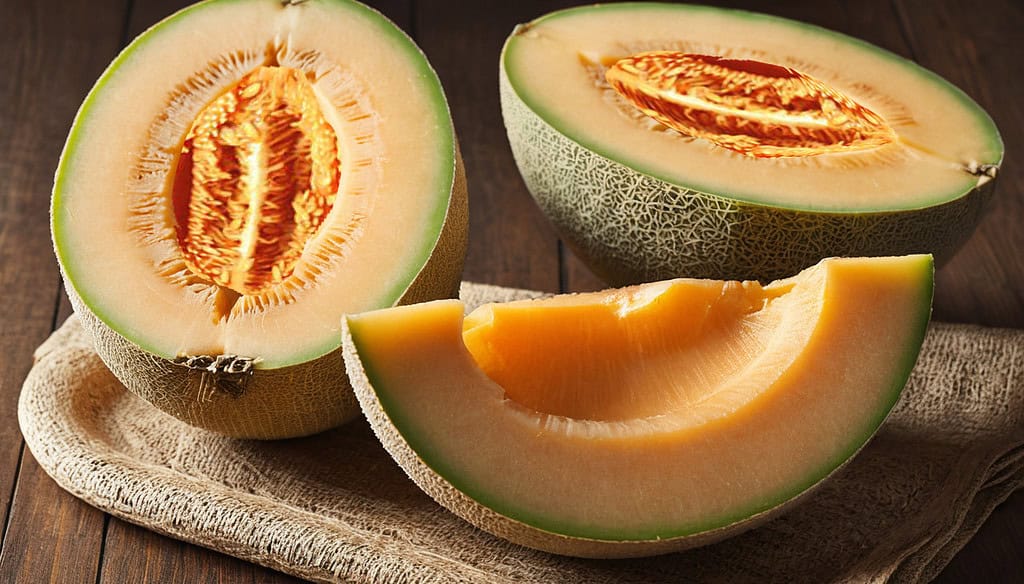
Cantaloupe, another revered member of the Cucurbitaceae fruits, is loved for its sweet, aromatic taste and juicy orange flesh. This melon is a powerhouse of essential nutrients that promote various aspects of health. It is particularly high in vitamin A, important for maintaining healthy vision, and vitamin C, which plays a crucial role in immune defense and skin health. The fruit also contains potassium, a mineral that helps regulate blood pressure and maintain proper hydration.
The combination of vitamins and antioxidants in cantaloupe supports the body’s defense mechanisms, reducing inflammation and combating oxidative damage. Its high water content, similar to other Cucurbitaceae fruits, makes it a hydrating snack, especially in warmer climates. Cantaloupe also contains dietary fiber, which aids in digestion and promotes satiety, making it a smart choice for those monitoring their calorie intake. In culinary applications, cantaloupe is wonderfully versatile. It can be enjoyed on its own as a refreshing snack, added to fruit salads, or paired with savory ingredients like prosciutto for a balanced flavor profile. Blending cantaloupe into smoothies or cold soups is another way to enjoy its delicious taste and reap its nutritional rewards.
The seeds, often discarded, are rich in nutrients and can be roasted for a crunchy and healthy snack. Additionally, cantaloupe rind is sometimes used in eco-friendly food preparations, highlighting the fruit’s versatility. As part of the broader Cucurbitaceae fruit family, cantaloupe demonstrates how these fruits can be nutrient-rich, hydrating, and adaptable to a variety of dishes, making them an excellent addition to our diets for overall health and wellness.
5. Honeydew Melon
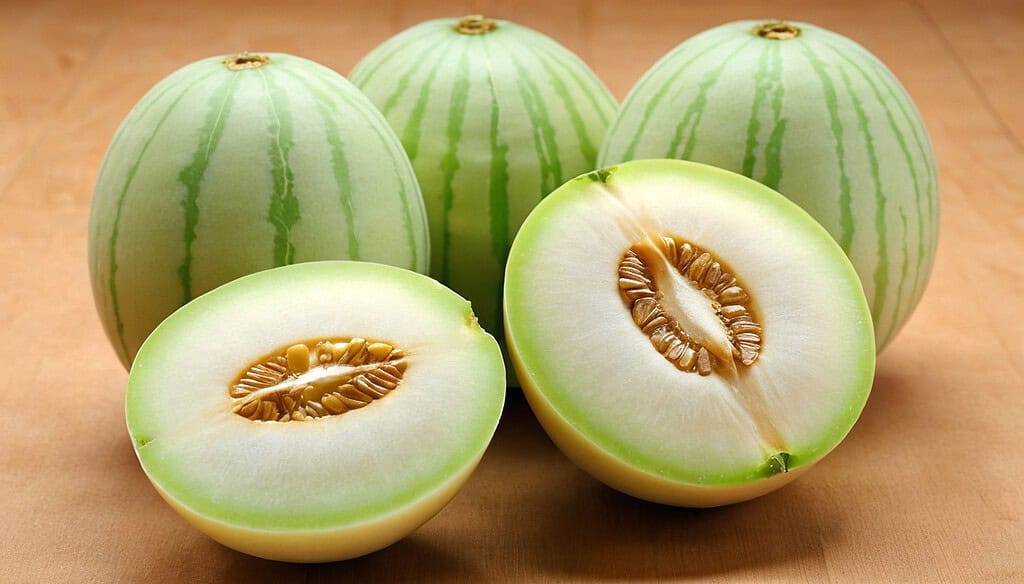
Honeydew melon stands out among Cucurbitaceae fruits for its sweet, juicy, and subtly fragrant flesh, making it a popular choice for refreshing summer snacks. Known for its smooth, pale green skin and light green flesh, honeydew is not only delicious but also a significant source of essential nutrients.
It is packed with vitamin C, which is vital for immune support, collagen production, and overall skin health. Additionally, honeydew provides potassium, a mineral that helps regulate blood pressure and promotes proper hydration. The fruit’s high water content makes it an excellent option for staying hydrated, especially in warm weather. Honeydew melon also offers a moderate amount of fiber, contributing to healthy digestion and improving gut health. Similar to other Cucurbitaceae fruits, it is low in calories, making it a guilt-free, satisfying snack that fits well into calorie-conscious diets.
Honeydew can be eaten fresh, cubed for fruit salads, or blended into smoothies and beverages. It pairs wonderfully with other fruits, adding a natural sweetness to any dish. The fruit can also be wrapped in prosciutto or drizzled with honey for a unique flavor contrast. Even honeydew seeds, though often discarded, contain valuable nutrients and can be roasted and enjoyed as a crunchy, nutritious snack. Incorporating honeydew melon into meals is a simple yet effective way to benefit from the rich nutritional value of Cucurbitaceae fruits while enjoying a delicious and hydrating treat.
6. Zucchini
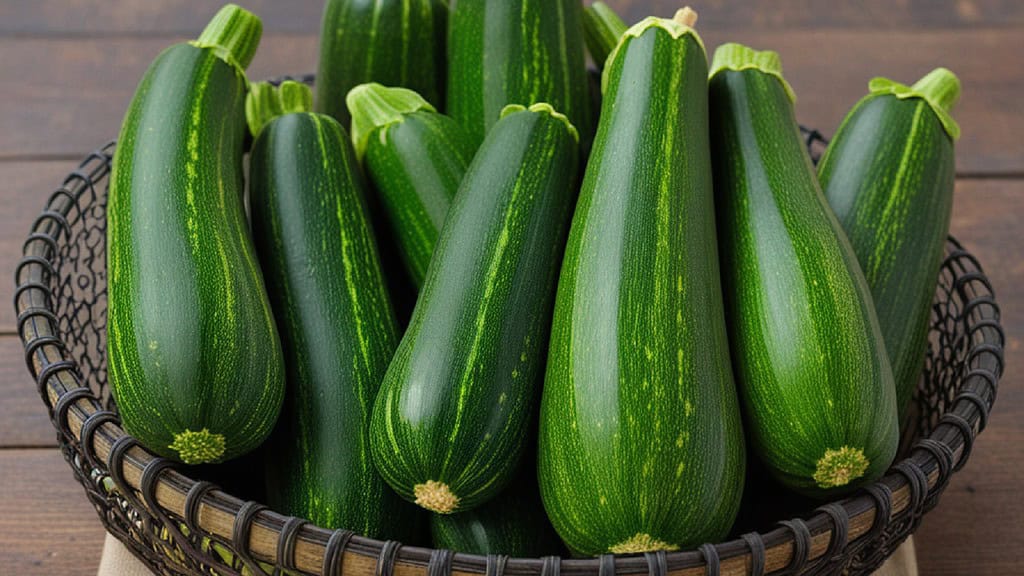
Zucchini is a highly versatile member of the Cucurbitaceae fruits family, frequently used in a wide array of culinary dishes. While commonly mistaken for a vegetable, zucchini is botanically a fruit and offers a range of nutrients that promote overall health. It is an excellent source of vitamin C, which helps bolster the immune system and protect cells from damage.
Additionally, zucchini provides a significant amount of vitamin B6, necessary for energy metabolism and brain function. The potassium found in zucchini plays a crucial role in regulating blood pressure and promoting cardiovascular health. One of the most impressive aspects of zucchini is its fiber content, which aids digestion, regulates blood sugar, and promotes a feeling of fullness. The fruit’s low-calorie profile and high water content make it perfect for weight management and hydration. Zucchini’s antioxidants, including lutein and zeaxanthin, support eye health and reduce the risk of age-related vision problems.
Like many other Cucurbitaceae fruits, zucchini can be prepared in various ways. It can be grilled, roasted, spiralized into noodles, or added to baked goods for extra moisture. Stuffed zucchini is a popular dish, showcasing the fruit’s ability to absorb flavors and complement a variety of ingredients. Even the blossoms of the zucchini plant are edible and prized for their delicate texture and taste. By adding zucchini to meals, one can enjoy the benefits of Cucurbitaceae fruits in creative and delicious ways that are as healthful as they are satisfying.
7. Bitter Melon

Bitter melon is one of the most unique Cucurbitaceae fruits, known for its distinct appearance and notably bitter taste. It is often used in traditional medicine, and its health benefits are widely celebrated, especially in Asian and African cuisines. Bitter melon is packed with essential nutrients, such as vitamin C, which enhances immune function, and vitamin A, which supports healthy vision and skin.
Additionally, it contains folate, which is important for cell growth and DNA synthesis. What makes bitter melon particularly special is its potential role in managing blood sugar levels. Compounds in the fruit, like charantin and polypeptide-p, have been studied for their insulin-like effects, making it a valuable addition for those monitoring glucose levels. Furthermore, the fiber content in bitter melon aids digestion and helps prevent constipation. Despite its strong, acquired taste, bitter melon is a nutritious component of many dishes. It can be stir-fried, stuffed, or added to curries and soups, often prepared in a way that reduces its bitterness while enhancing its flavors.
The seeds and inner pith are also edible, though they are usually removed to lessen the fruit’s intense bitterness. Similar to other Cucurbitaceae fruits, bitter melon is rich in antioxidants, which combat free radicals and support overall health. While it may not be as commonly consumed as some of its relatives, bitter melon remains a crucial part of various traditional diets and exemplifies the diverse range of benefits offered by Cucurbitaceae fruits.
8. Squash
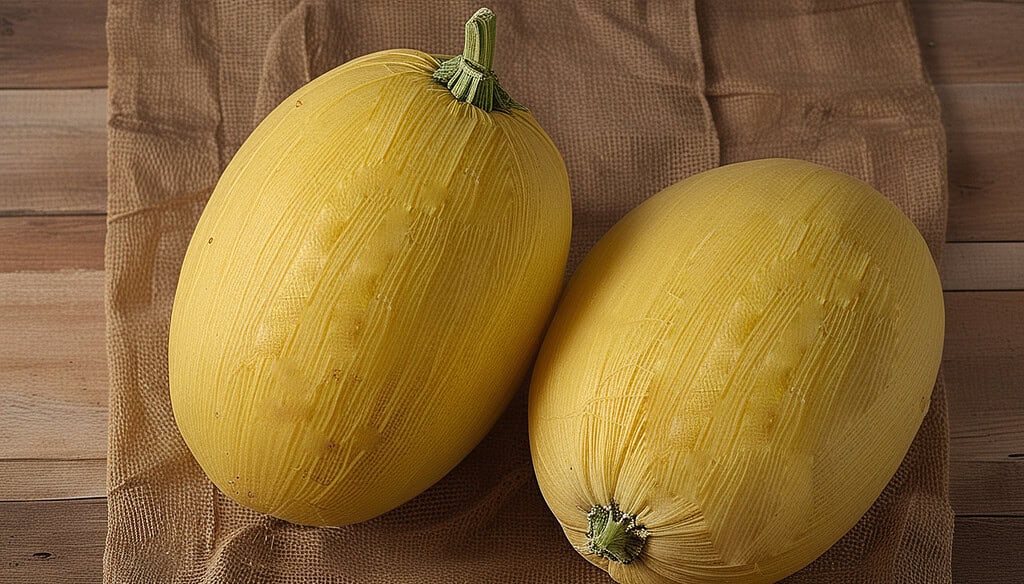
Cucurbitaceae Fruits – Spaghetti Squash
Squash, a broad term encompassing many varieties, is a beloved member of the Cucurbitaceae fruits family and plays a key role in cuisines worldwide. Squash varieties, such as butternut, acorn, and spaghetti squash, come in an assortment of shapes, colors, and flavors, each offering a unique nutritional profile. Rich in vitamins A and C, squash is excellent for maintaining healthy vision, boosting the immune system, and promoting radiant skin. It also provides significant amounts of dietary fiber, which supports digestive health and can contribute to satiety, making it a valuable addition for those looking to manage their weight.
The presence of potassium in squash aids in regulating blood pressure, while magnesium contributes to muscle and nerve function. Squash seeds are not to be overlooked, as they are nutrient-dense, containing healthy fats, protein, and minerals such as zinc. Roasting the seeds with a sprinkle of seasoning makes for a tasty and wholesome snack. The flesh of squash is versatile, easily roasted, pureed into soups, or added to casseroles and gratins. Squash can also be stuffed and baked, allowing for endless possibilities in the kitchen. Even the skin of some squash varieties, when cooked, is edible and packed with nutrients.
Like other Cucurbitaceae fruits, squash provides antioxidants that protect the body from oxidative stress and inflammation. Whether enjoyed in sweet or savory dishes, squash brings warmth, flavor, and nutrition to the table. Its adaptability and health benefits highlight the significance of Cucurbitaceae fruits in supporting a balanced and nourishing diet.
Disclaimers: *This article is only for informational purposes.
**Do not make your important decisions based solely on the information provided in this article. Do your own research.
***Information in this article may vary or get updated in the future.
****Contact a doctor or a medical professional for any medical emergency.
Read More Science and Space Articles
- Top 8 Delicious Anacardiaceae Fruits You Must Try
- 8 Incredible Musaceae Fruits You Need to Try Right Now
- 8 Incredible Vitaceae Fruits: Nature’s Tasty Treasures
- 8 Incredible Rosaceae Fruits You Need to Discover
- 8 Amazing Citrus Fruits That Will Brighten Your Day
- 8 Non-CO₂ Greenhouse Gasses That Are Worst Than CO₂
- Chemistry: 8 Unique Ways to Become Efficient At It
- 8 Ways Water Crisis is Worsened by Global Climate Change
- 8 Amazing Ways Brain Anatomy is Altered by New Learning
- 8 Disastrous Ways Deforestation Destroys Biodiversity
- Mathematics: 8 Interesting Ways To Become Efficient At It
- 8 Worst Ways Global Climate Change Hurts The Impoverished
- Danger Of Environmental Damage: 8 Ways A Person Can Help
- Eradication Of Poverty: 8 Critical Ways Science Helps
- STEM Fields: 8 Important Reasons Why You Must Learn Them
- Making Your Kid Efficient At STEM Subjects: 8 Important Steps
- Making Your Kid Science Enthusiast: 8 Important Steps
- Becoming A NASA Aspirant: 8 Important Steps You Must Follow
- Top 8 Important Wellness Habits That You Must Follow
- Top 5 Amazing Whole Grains That Are Healthier Than Rice
- Indian Space Program: 8 Incredible Achievements
- China’s Space Program: 5 Amazing Accomplishments
- Discoveries by JWST: 10 Incredible Findings of The Telescope
- NASA’s MOXIE Creates O2: Big Step Towards Mars Colonization
- Top 5 Amazing Properties of Time That Defy Common Sense
- 10 Factors for Emergence of Intelligent Life in The Universe
- Space Science: 6 Vital Reasons Why We Should Invest in It
- Solar System: 10 Astonishing Uniqueness of our star system
- Our Universe: An Incredible Journey of 13.7 Billion Years
- Top 6 Solar System Objects That Might Destroy Life On Earth
- Certain End of The Universe: 4 Forces of Nature to Watch Out For
- Big Bang: An Incredible Start of Universe 14 Billion Years Ago

